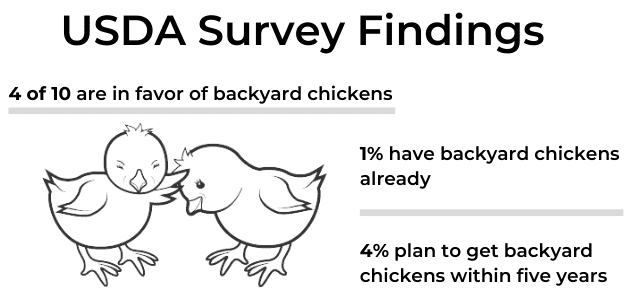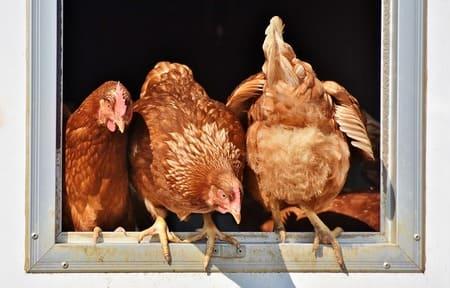How to Move with Your Flock of Chickens
What the FLOCK?! Before we start, I want to explain that when we're using the word "flock", we are referring to backyard chickens. The tips provided are not applicable for commercial poultry, but these tips can be used when you're moving with any backyard poultry.
With living in Ohio and 50% of it being farmlands, the itch to start my own flock and be more in touch with where my food (in this case eggs) comes from grew immensely. Fast forward to two years living here and I now have a flock of 28 chickens and 10 ducks. Needless to say, they are part of our family and we have grown to know each of their personalities, so when we decide to make our final move and buy a house, them coming with us will not even be a question.

When you have your own flock, you know that despite their resilience to different environmental factors, these “routine derived” creatures are most fragile to stress. Before making any move, whether cross country or locally, properly planning the move for your flock will be key in making sure that they survive their BIG move.
Know The Legal Requirements
When you are transporting animals, especially those considered to be 'livestock', you will find that there are many requirements and restrictions. This is especially true if you are moving to another state.
Depending on your destination and the states you will drive through to get there, you may need to prepare several months ahead of your move. The American Veterinary Medical Association provides a great resource to help you get started. You should also contact your (new) state’s Animal Health Official. You can download a complete directory of the state animal health officials on the USAHA website.
Local Ordinances and Zoning
Not all cities and counties allow backyard chickens, and those that do may impose strict restrictions. You'll want to make sure that your new city and county allow backyard chickens in the early stages of planning your move. To do this, you'll need to contact your local government. More often than not you'll be looking for the department that handles ordinances or zoning.
With planning came hours of extensive research on how to safely transport my flock, so I’ve decided to compile and breakdown some tips into 3 different steps.
Prepare

Accommodate

Acclimate


Prepare
How well you prepare will have a domino effect on how well your flock will handle the stress. To set them up for success keep the following in mind:
- Start boosting your flock’s immunity and health with probiotics and supplements prior to your move date
- Pick your method of transportation. Key Rule: Make sure it’s contained, but “homey”
- "Dog" Crates (preferred method)
- Commercial/Hatchery crates (Keep in mind they are meant to keep chicken snugged, for long-distance moves this may cause tons of heat)
- DIY Carrier made from moving boxes
- Put some bedding down (I prefer hay to keep them extra comfy)
- Sprinkle some scratch grain in the bedding (This entertains them)
- Provide food and water
- Herbs ARE for the birds! Place your chickens favorite herbs in the crate to not only add to their entertainment but to help with stress and immunity. (Lavender, Oregano, Parsley, Sage, and mint are all great choices)

Accommodate
Are we there yet? After thinking all of the logistics through, the time has come to put your preparation into action, woohoo! This will be the most crucial part as it could mean life or death for the #backyardchickens.
- Don’t mess with the pecking order! With being a chicken parent, you know that these orderly creatures like their routine and have given each of them an order to abide by. Use this to your and their advantage when loading them up. Make sure to pair them as close to the normal pecking order as possible.
- Ensure proper ventilation is in place (chickens can overheat easily)
- Use their internal clocks against them. Try to minimize the light they get, the less light the more of a dormant state they will be in. Better yet, try to time your drive to be more at night!
- Do not prolong stops, try to get from point A to B, as quickly and safely as possible. Do not drag the trip into one week when it can be done in two days.
- Check water and food during every stop!

Acclimate
You made it! You and your flock are probably over it by now, but you made it through the most crucial portion of the move- so YOU’VE GOT THIS! When you arrive, try the tips below to get them acclimated to their new environment, and make the transition easy for you both.
- If the transportation carrier is small enough to fit in the coop, put it in the coop and open it up so they can migrate to their coop on their own. If not, just carry them inside. (COOP, not RUN)
- Leave them in the coop for a day or two with dry food and water.
- Once a day or two go by, introduce them to their run, but make sure they go back into their coop at night until they get used to it.
- On the flip side, encourage them to go outside and explore in the morning
These EGG-cellent tips will ensure that this move is an easy transition for you and your kids...I mean flock. Be sure to look into hiring moving labor to help ease your workload by making this BIG move.
Related Posts
By accepting you will be accessing a service provided by a third-party external to https://www.movinglabor.com/